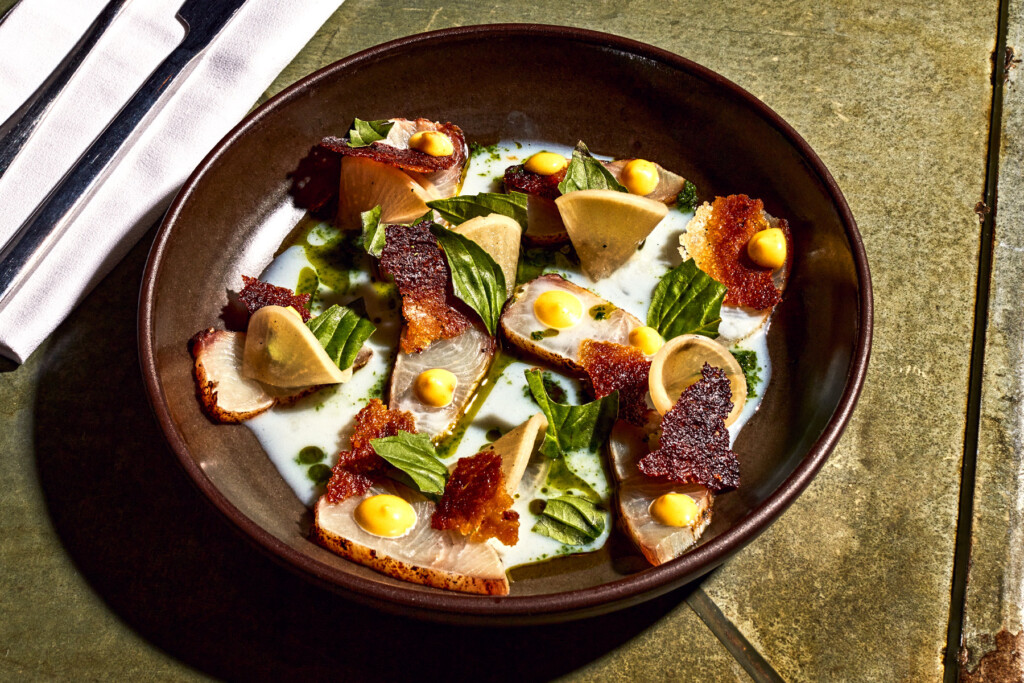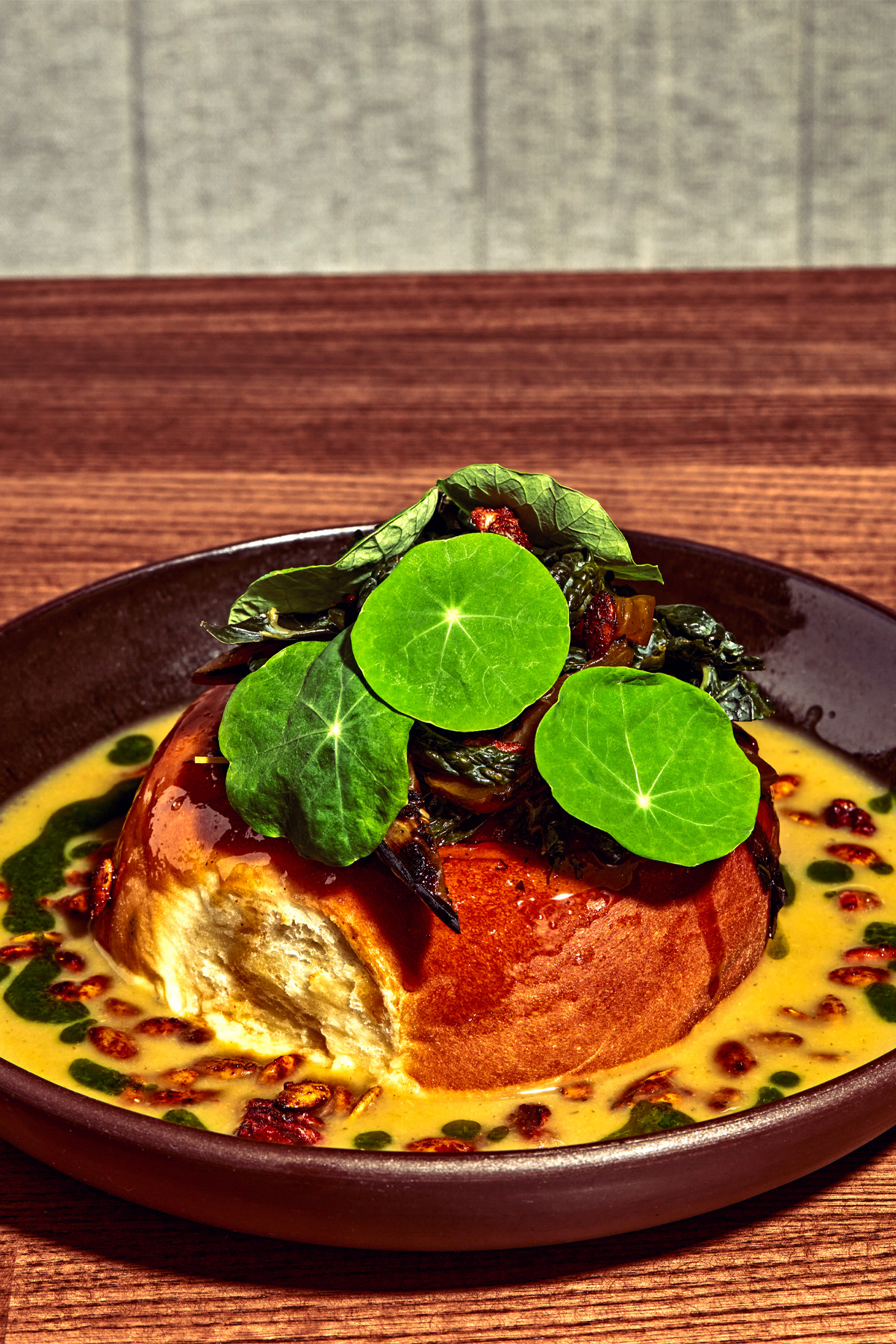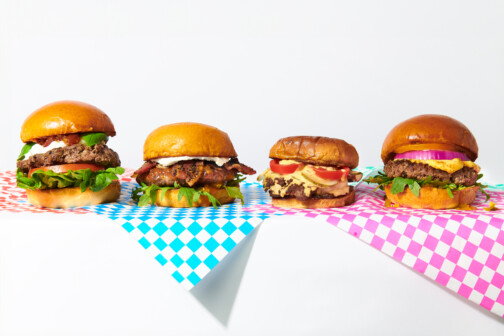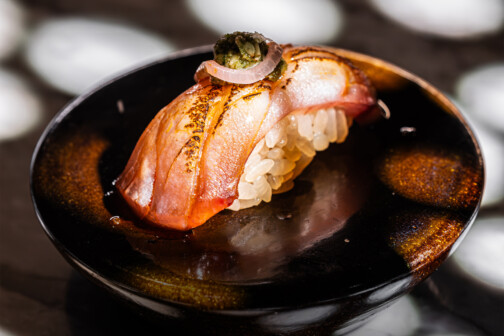Your dreams are always more interesting to you than they are to others. You see wild images and experience them as a rush of emotion. Then you wake up, try to describe the dream to a friend, and realize that the words available are not at all adequate to express what you felt. “It was my house, but it wasn’t my house,” you sputter, watching your listener’s eyes glaze over.
A plate of food at Petra and the Beast is a little bit like that. Describe the dish, which often involves four or five intricate, time-consuming techniques, and you’ll sound like a walking cookbook. But the feeling of eating it isn’t like studying for a chemistry test.
The plates here taste of heart and soul. Take the pasta, for example. You could describe the dish this way: it tastes like shrimp scampi has unlocked a higher level. It’s creamy and smooth but with a slightly smoky, tart undercurrent, as if all the flavors of a summer cookout were combined in one dressing. Or you could parrot the menu’s verbiage: the noodles are paprika-infused tagliarini; the sauce is made with shrimp shells, tarragon, and gin, which are then blended like a bisque; and it’s all tossed with a “sour pepper emulsion.”
The next day you tell friends about that pasta, but they hear “infusion” and “emulsion,” and their eyes start drooping, and the word “sour” makes them think about gummy candies. You’ve lost them. The meal was a dream, and you can’t explain how it felt. And you didn’t even mention that the bowl was garnished with crispy fried marinated shrimp heads.
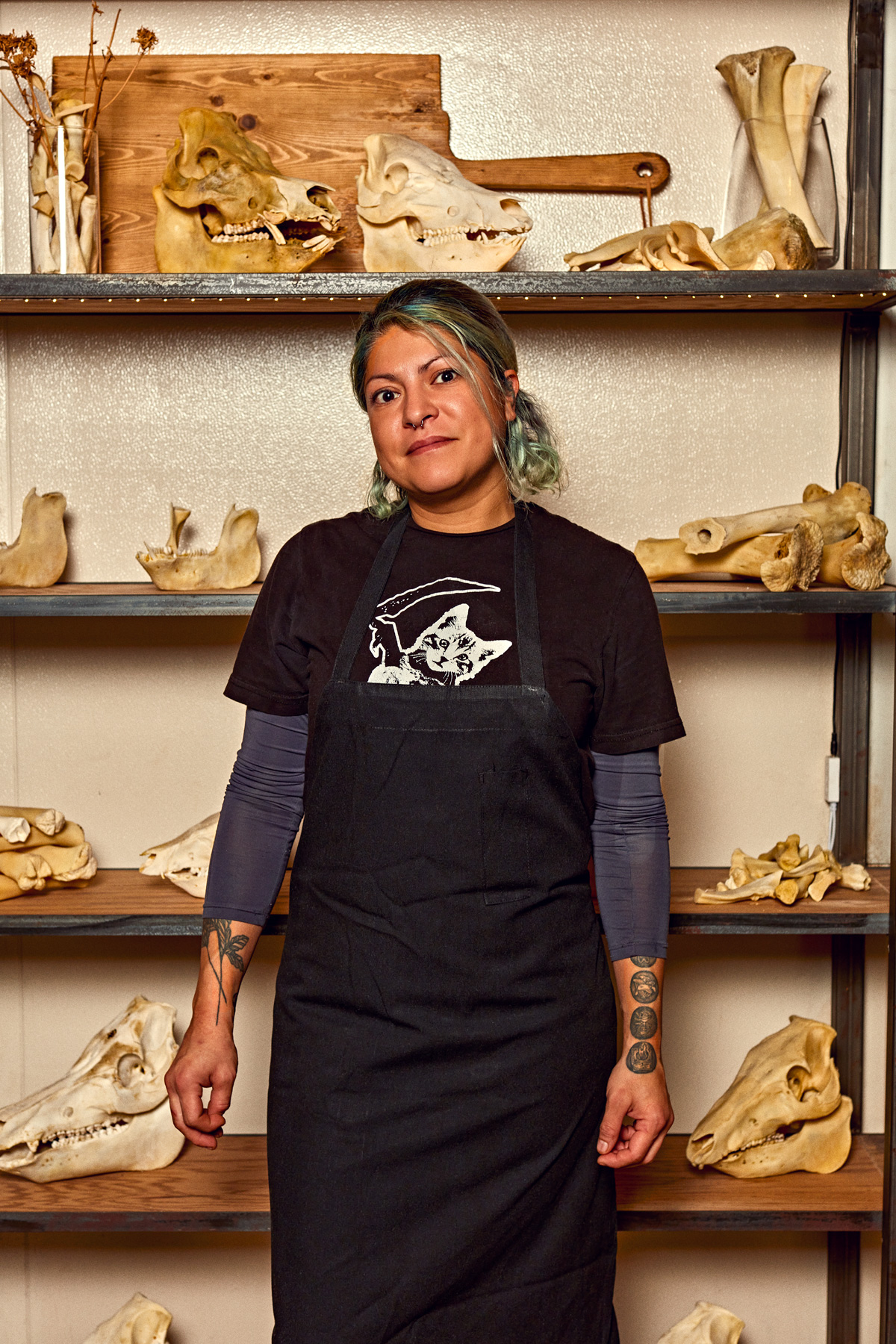
Misti Norris has been working this kind of magic for a long time. She established her voice at Small Brewpub in Oak Cliff, and then she began Petra and the Beast as a temporary pop-up in a historic East Dallas building. That “temporary” spot lasted five years before Petra moved to a permanent, bigger stage this fall. Norris’ new restaurant has room for more kitchen staff, more toys (including a rotisserie smoker), and alcohol service. She has bar seats, counter stools where diners can watch the cooks work, and a semiprivate dining room for the chef’s tasting menu—which is now served on two nights instead of just one. Petra even serves brunch now.
Longtime fans will just want to know if the changes are good, so let’s start there: yes. The bar focuses on a handful of seasonal drinks at a time, and they tend to be light, enjoyable, and food-friendly. In fact, the best cocktails replicate the dream logic of Petra’s food. The All Cattle No Hat’s description is surrealist. (Butter? Mushrooms? Tea? Help!) But it tastes as simple as an autumn-spiced Manhattan. The only hard part is waking up the next day and figuring out how to convince your friends that you enjoyed it.
Petra’s physical space is cozier and more welcoming than it was in its past life as a barbecue joint, mostly going for the feel of an eccentric farmhouse. Only the tasting menu’s private dining room doesn’t match. In here, the lighting—including a cool neon sculpture by Waco-based artist Michael Christopher—is steely blue, a shift that makes the tasting feel less homey than the a la carte seats.
The new location’s other major change is its bigger staff. In the early, “temporary” Petra years, the kitchen could be just four people at a time. Now, a whole talented team keeps the menu humming. (I checked this by booking a table during Norris’ vacation to Disney World.)
Happily, the style that established Petra and the Beast’s reputation is unchanged. Many of her ingredients are still foraged, pickled, or preserved. All the paradoxes that make Norris so fascinating remain intact, too. Her great loves are pork and pasta, but her most memorable dishes feature vegetables. Her plates layer technique upon technique to create a result that seems effortless. Her upbringing in rural Louisiana refracts at odd angles through classic Italian pastas or Asian-inspired cured fish. Some ingredients are prepared with care for hours or days; others get burned on purpose.
But it’s all so hard to describe after you’ve enjoyed it. This is because, for all the labor in each dish, the finished result always tastes intuitive and comforting.
“It should come out as simple,” Norris says. “We don’t want our guests to have anxiety attacks. As long as they enjoy it and find it interesting, that’s all we really want.”
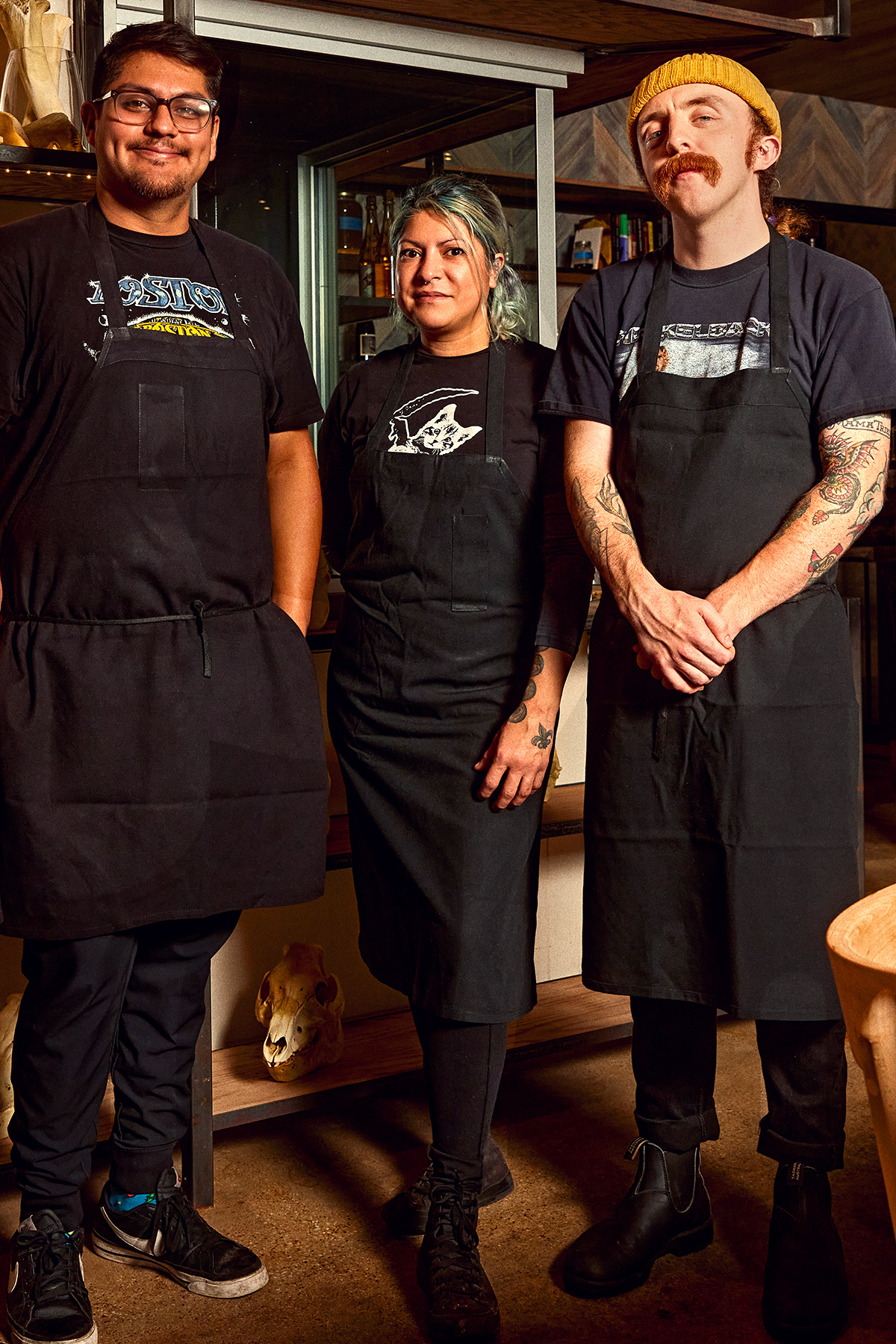
A whole pork shank—listed with irony as a “snack”—appears unassuming. Its outside is crisp, the inside bright pink and tender. Around it, a spicy sauce makes for the perfect complement. As easy as that pork shank is to eat, it’s hard to prepare. It gets cured for two days, braised for four hours, left to sit and firm up overnight in the braising pot, smoked for four more hours, and then glazed with a reduced version of the braising liquid. One of the cooks grows the pequín chiles used in the sauce.
A frequent trick Norris performs is to use the same ingredient several ways on one plate to make it taste even bolder, like a singer providing her own backing vocals. Delicata squash-stuffed pasta is topped with lightly pickled squash. A course celebrating local heirloom tomatoes features fresh, brined, confit, and pickled versions; the brine uses Fresno chiles, and then the peppers get recycled into a chile jam. This doesn’t taste repetitive. Instead, it’s bright, gently spicy, and enriched by a sauce of chicken fat and a garnish of crispy chicken skin. (That recipe came from executive sous chef Rubén Nuñez.)
The one-thing-many-ways strategy is frequently employed at dessert. In the fall, cubes of sweet potato cake were plated next to dollops of sweet potato cream and fall spices and then topped with crispy sweet potato chips and gingery whipped cream. Even that description is too clinical. Here’s the dream version: your family baked sweet potato pie for Thanksgiving, but someone felt a little devilish and added an extra tablespoon of ginger. Now the kids won’t eat it. More for you!
Her upbringing in rural Louisiana refracts at odd angles through classic Italian pastas or Asian-inspired cured fish.
Not every dish has a long backstory. Petra has a delightful way with salads: local greens, fresh herbs, and crunch, delicately dressed. Our table raved over a savory bun filled with braised oxtail and cheddar. Over the top was a spicy Caribbean-style curry sauce, a handful of pickles, and a sprinkling of pepitas.
The legendary charcuterie board is now available in either a normal (large) size or as a Beast Board, an enormous plank almost as wide as the tables, holding portions of 10 cured meats plus Petra’s famously punchy house mustard, pickled veg, jam, and seeded crackers that arrive in big sheets, waiting for you to snap off what you need. The size of the Beast Board is terrifying—bring a group if you dare attempt it—but the contents are reliably among the city’s very best charcuterie. (Its only real rival is at Lucia.)
Part of the reason that Norris’ food speaks so directly, despite its complexity, is her sense of balance. Every dish is calibrated to have just the right touch of spice, just enough acidity to cut through the fat. Inherently salty ingredients never become too rich. If a food is soft, it’ll always be topped with crispy chips.
Any complaints we had over three visits were tiny—a cracker that wasn’t crispy, a piece of kuri squash with a too-woody exterior, a briefly forgotten drink. If there’s a weakness to the a la carte menu, it’s that all these flavors can jostle for attention in your memory afterward. Your friend asks what you ate, and you get so lost in a memory of garlicky grilled eggplant, like baba ghanoush that hasn’t been puréed, that you lapse back into dreamland. Or maybe the opposite will happen. You’ll stare at the menu, unaware that all those complicated words translate to simple rushes of comfort.
There’s a cure for that. Come for Petra’s tasting menu. Then your memories will follow an orderly path from the tiny welcome dish—we had redfish rillettes with two sauces, one using fermented hot peppers and the other cooling buttermilk—to the dessert, in our case ginger quesillo with gingersnap toffee.
This tasting is Dallas’ best high-end restaurant bargain at $135. That price hasn’t changed in the move from old to new Petra, but now you can add a pairing of global natural wines. Not everybody loved every wine at our table, but the wine ethos is like the kitchen’s: take what nature gives and learn to appreciate it. The pairing is smartly priced at $90 for six glasses, although, if you prefer to choose your own adventure, the entire wine list is affordable.
Petra is still Petra. There’s just a whole lot more of it. It’s funny that all this time people thought the shabby temporary digs were essential to the restaurant’s appeal. Now we can see that they were a limit on its potential. The old Petra and the Beast was the cocoon. This one’s the butterfly.
This story originally appeared in the January issue of D Magazine with the headline “Beast Mode.” Write to [email protected].
Author



